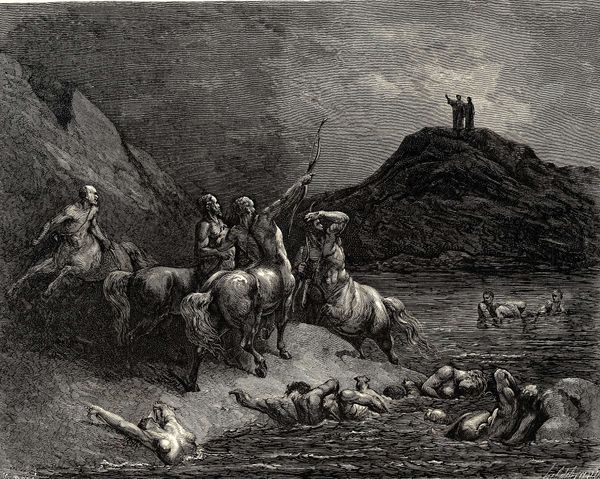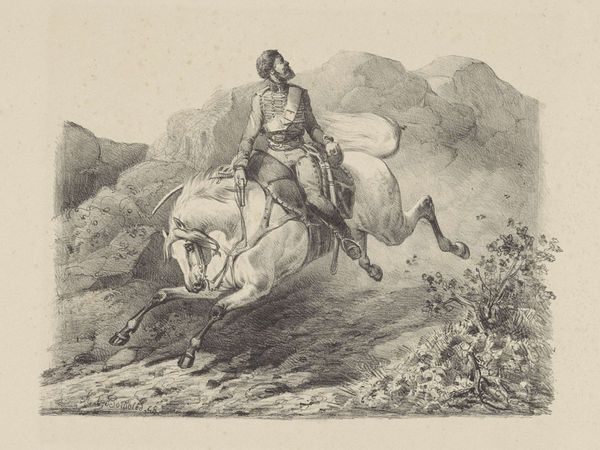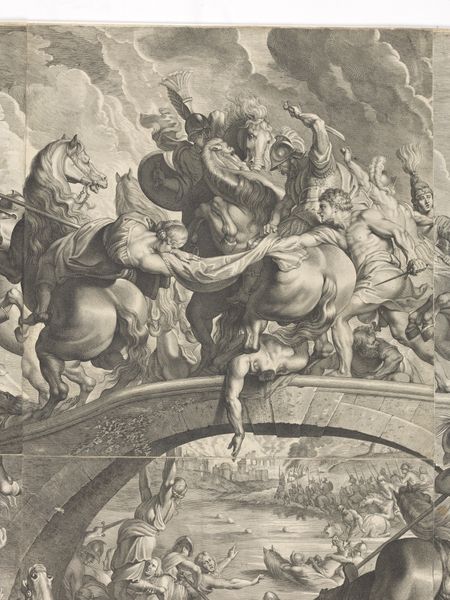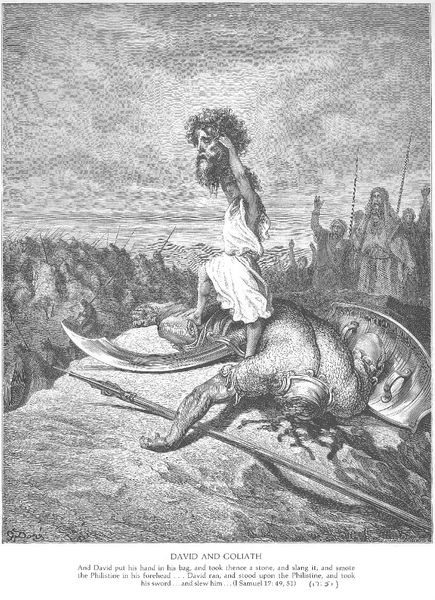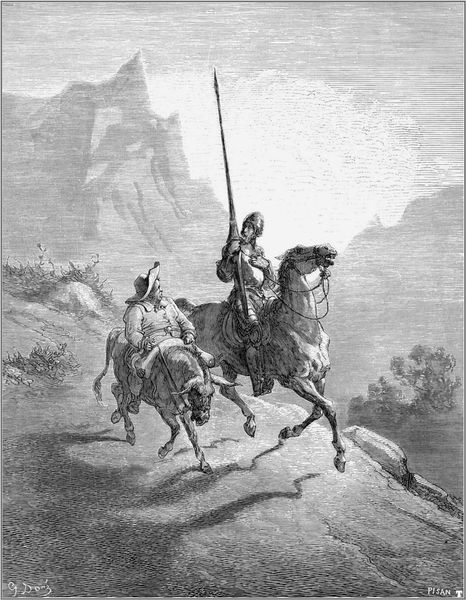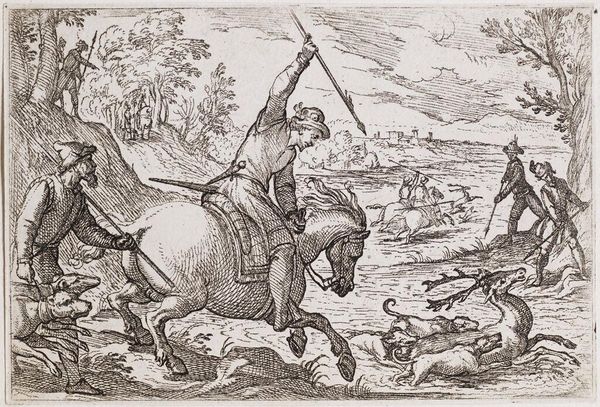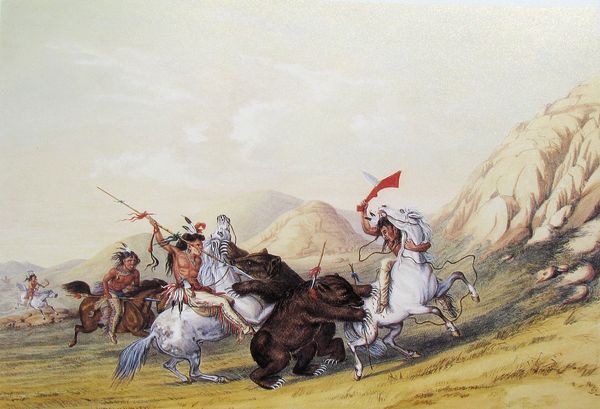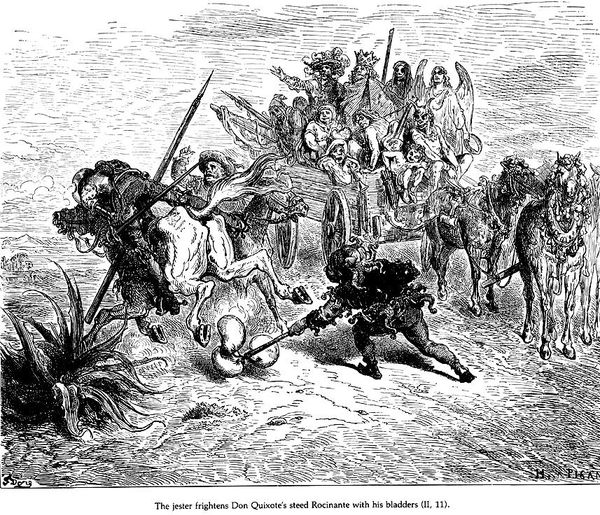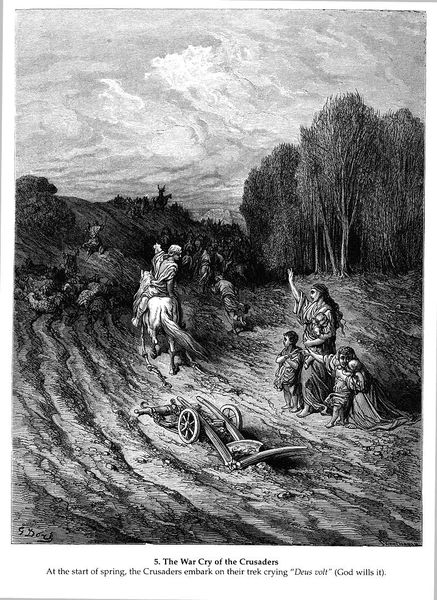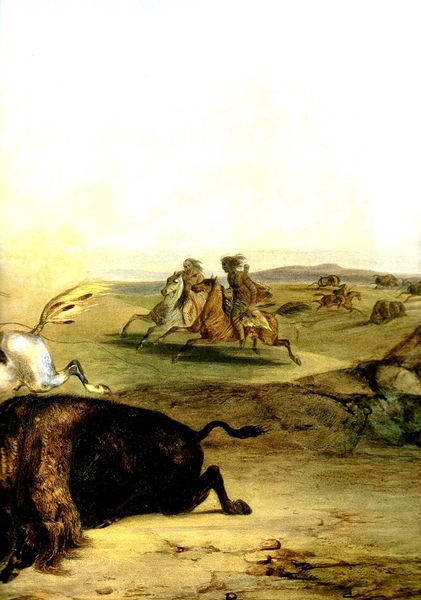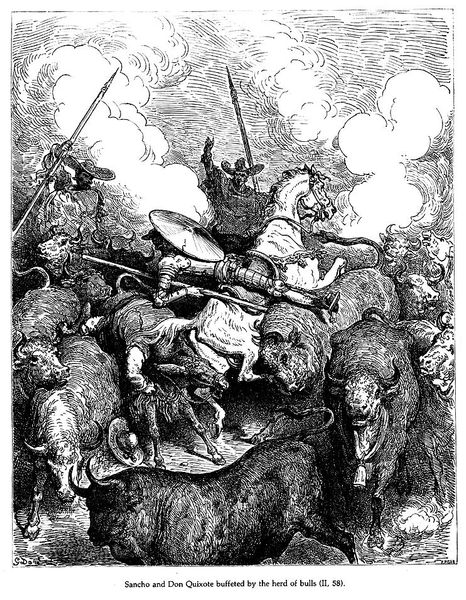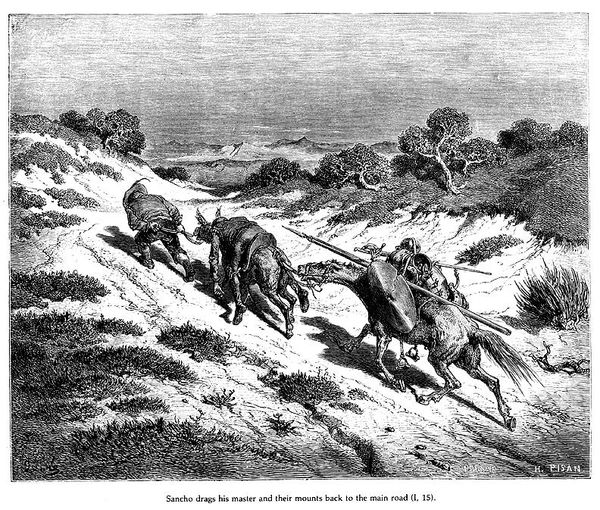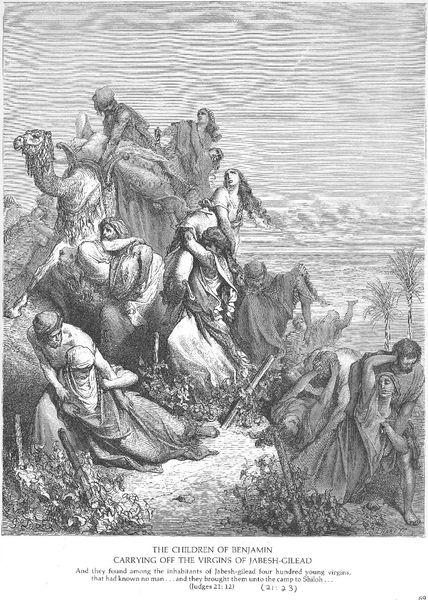
drawing, print, charcoal, engraving
#
drawing
#
medieval
#
narrative-art
# print
#
charcoal drawing
#
figuration
#
romanticism
#
surrealism
#
line
#
charcoal
#
history-painting
#
engraving
Copyright: Public domain
Editor: This print is Gustave Doré's "The Inferno, Canto 12." It's a highly detailed engraving, and I'm immediately struck by the dynamism and chaos. What story do you think Doré is telling here? Curator: The frenetic energy really speaks to the larger sociopolitical context Doré was working in. Consider the rigid power structures that informed 19th-century European society – a world ripe for the kind of violent upheaval Dante portrays. These centaurs, caught between human intellect and animalistic impulse, what might they represent within the colonial narratives and power structures of Doré’s time? Editor: I hadn't considered the colonial aspect. So, you're saying the centaurs might symbolize the subjugated, a people seen as somehow less than human? Curator: Precisely! The hybridity of the centaur is key. European colonial powers often characterized colonized people as existing on a lower rung of a perceived evolutionary ladder, trapped between "civilization" and a state of nature. Doré, consciously or not, taps into this dehumanization. The river, with the figures submerged to their heads – what does that evoke for you? Editor: A kind of punishment, maybe? Or a cleansing? Perhaps a forced baptism of sorts, in the context of colonialism? Curator: Excellent! It speaks to forced assimilation, a washing away of indigenous identities in favor of European ideals. And think about the artistic lineage Doré inherits! The emphasis on line recalls earlier forms of social critique within graphic arts, like Hogarth, repurposed here to address the turmoil of faith and political ideology in Dante's vision. What's striking is how a classic text allows him to confront anxieties specific to his moment. Editor: Wow, I never would have gotten all of that on my own. Now I’m seeing it as much more than just an illustration of a scene from the Inferno. Curator: Absolutely. By viewing Doré through the lens of colonial and social power dynamics, the print unlocks new layers of meaning and its continued relevance to discussions on identity and oppression.
Comments
No comments
Be the first to comment and join the conversation on the ultimate creative platform.
